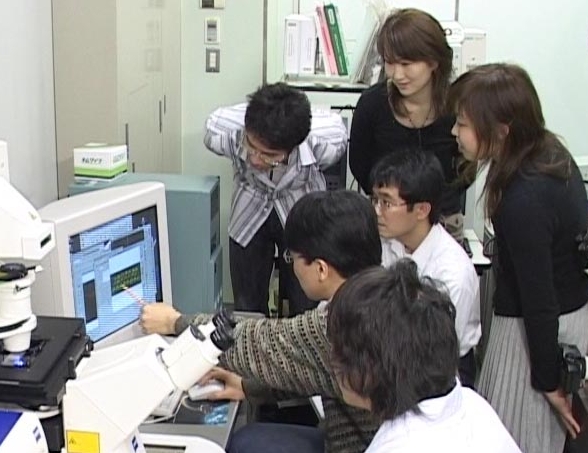|
| |
Research on genes specifically expressed in sensory organs
Nerves are excellent information processing systems; 1) They sense information
from the outside world with their sense organs. 2) The brain analyzes that
information and recognizes what is happening. 3) Think further based on the
perceived information and decide how to respond. 4) Based on this judgment,
motor commands are issued from the brain and actions are constantly repeated.
For example, the behavioral patterns of animals, such as fleeing when an enemy
approaches and chasing prey when they find it, are based on the functioning of
the nervous system.
The nervous system collects information from the outside world through sensory
organs such as the ears, eyes, taste buds, and olfactory epithelium. Each
sensory organ is a type of nerve, but it is an organ that has acquired special
functions and differentiated during the process of evolution. Sensory organs
involved in vision, hearing, taste, smell, touch, and thermal and pain
sensations have sophisticated sensor proteins that detect various external
stimuli such as electromagnetic waves (light), sound waves, chemicals, physical
stimuli, and temperature. Masu. The genes encoding these sensor proteins are
specifically expressed in each sensory organ. Such genetic abnormalities are
also involved in diseases specific to the sense organs.
We have identified genes that are specifically expressed in sensory organs and
analyzed their special functions. Regarding taste, we identified a gene involved
in sour taste perception. In addition, there are large individual differences in
taste sensitivity among humans, and we believe that one of the causes may be
related to genes, so we analyzed the human taste receptor genes and added amino
acids to the taste receptor genes. It was revealed that there are various
individual differences accompanied by mutations. In vision, we cloned the
retinalfascin gene, which is specifically expressed in retinal photoreceptor
cells, and revealed that the gene is an actin bundling protein that is involved
in the formation of a special morphology of photoreceptor cells. Later, Dr. Wada
and his colleagues at Tohoku University revealed that this gene is the most
important causative gene for autosomal dominant retinitis pigmentosa in Japan.
Recently, I have been working on research on ion channels that respond to
mechanical stimuli, which are involved in auditory reception.
 |
|
![]()